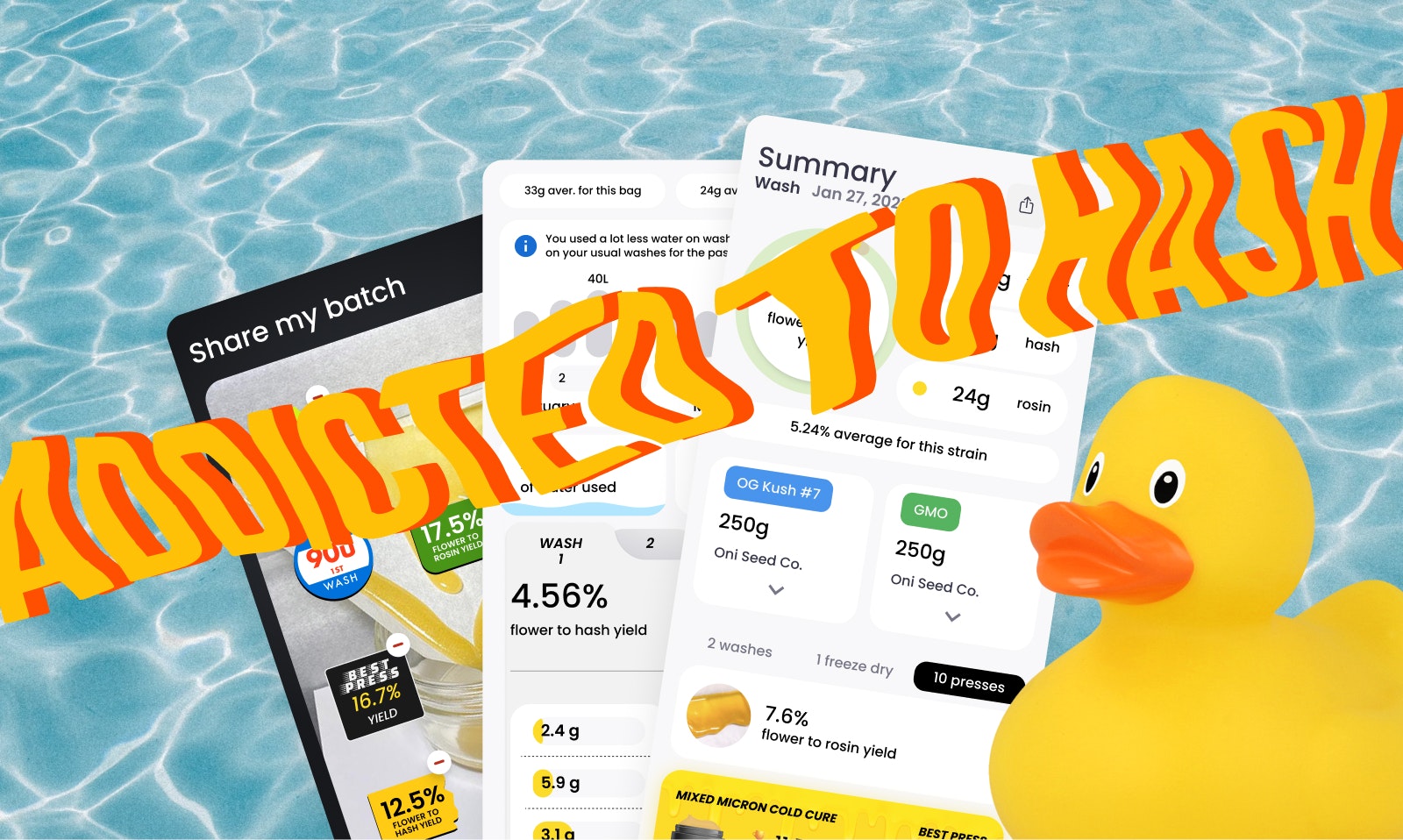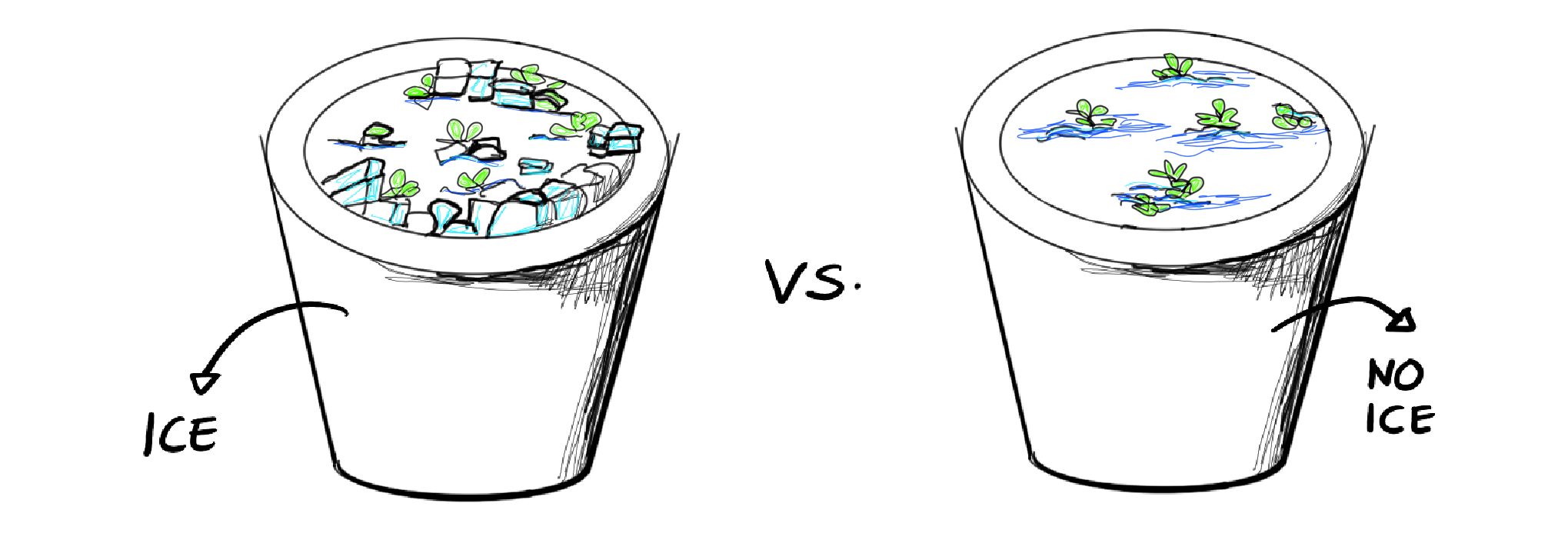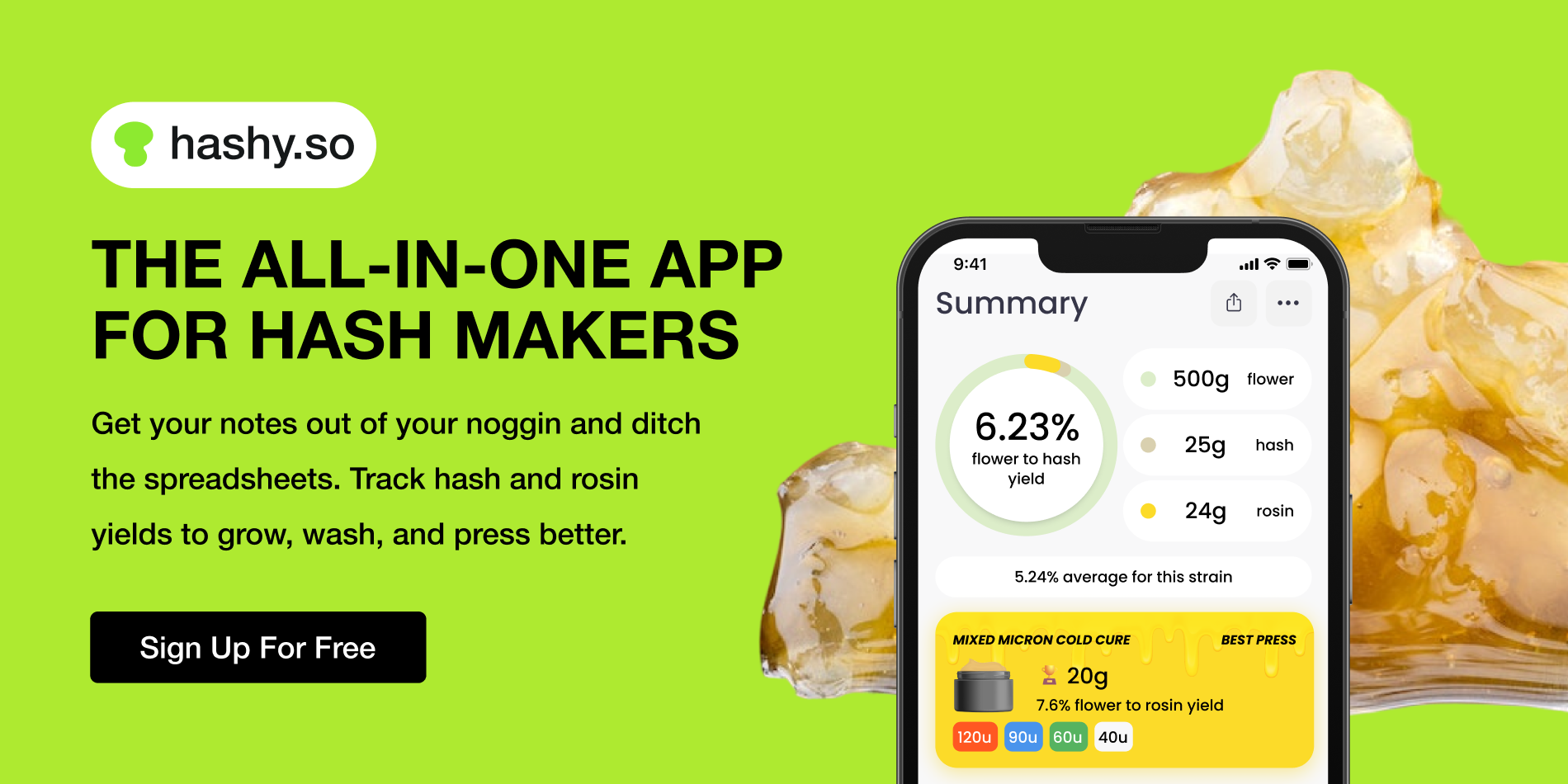

Making high-quality bubble hash for full melt or rosin production requires careful attention to water temperature. In this guide, we’ll discuss the importance of water temperature, the benefits and drawbacks of using ice or going iceless, and how to maintain optimal conditions for the best bubble hash and easiest resin collection.
Washing the best hash generally means keeping your water and ambient temp as cold as you can get them. Cold water helps to separate the trichome heads from the plant material more efficiently. Cold ambient air temperatures means it'll be easier to collect the resin from your bags without sticking and clogging.
However, extremely cold water is easier said than done and requires a lot of attention to detail to get it right.

There are two primary methods to cool your water for bubble hash production: using ice or an iceless water-chilling system.
The ice method is the simpler and more cost-effective option. However, controlling the temperature during multiple washes can be difficult. If the ratio of ice to water to material is not properly balanced, you could overcrowd the bucket, which could hinder the extraction of the trichome heads by limiting the creation of a vortex.

Basic overview to get the most out of washing with ice:
An iceless water-chilling system offers greater control over the temperature during multiple washes but is more expensive to set up. This method involves separate vessels, recirculation mechanisms, and requires a more in-depth setup process or system. In turn, it'll also require quite a bit more space. Generally a better option for larger facilities (especially considering the value saving of recirculation setups), but becoming popular for home hash makers as well due to its efficiency.
Basic advantages of using iceless water chilling system:
Regardless of the method you choose, using a properly insulated vessel is essential to maintaining the desired water temperature. Insulation reduces heat loss, making it easier to keep your washes colder.
Basic recommendations for insulation:


While there is limited scientific research on the effects of washing hash at different temperatures, we've compiled findings from discussions with many hash makers into a basic overview. Here's a breakdown of the effects at various temperature ranges:

>32°F (>0°C) to 34°F (1°C): This is considered the optimal temperature range for making bubble hash. At these temperatures, the trichome heads become brittle and easily separate from the plant material, leading to a higher-quality product with minimal plant contamination.
Be mindful that some bizarre stuff can happen if you're working at freezing water temperatures (partial freezing), so it's best practice to stay just above that -- especially if you're working in a proper cold room or subfreezing environment.
34°F (1°C) to 40°F (4.4°C): Washing hash in this temperature range may still produce a good quality product, but the trichome separation may be less efficient. As a result, the final product may contain more plant material and
have a slightly lower purity.
40°F (4.4°C) and above: At temperatures above 40°F (4.4°C), the efficiency of trichome separation decreases significantly. The trichomes become less brittle, making them harder to separate from the plant material. Consequently, the final product may contain more contaminants, including plant matter and chlorophyll, which can negatively affect the taste, appearance, and overall quality of the hash. It may also start to get stuck inside your bubble bags and make it a lot harder to collect.
Water temperature is just one of the many critical variables to consider when you're running your next batch. It's crucial to keep your water as cold as your setup allows to ensure efficient breaking of trichome heads during washing and minimal greasing during the collection process.
Washing with ice and without ice both have their benefits, but it's important to review how each one works within your specific production environment.
Tracking is key if you want to dial in your wash water temperatures and ice/material ratios. Be sure to measure everything and record all of your data points in order to figure out what works best for specific cultivars. If you need help figuring out what data you should be tracking during washes or how to track it, you know who to hit up ;)